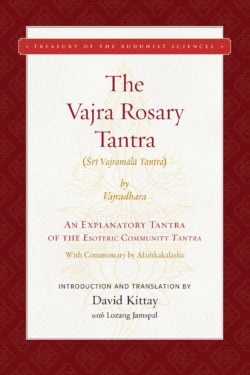Losang Jamspal
Dr. Lozang Jamspal received an Acharya degree in Sanskrit, Hindi, and Buddhist and Indian philosophy at Sanskrit University, Benares. At the university, he served as a librarian and Tibetan language instructor, and helped to establish the Central Institute of Tibetan Studies where he later worked as lecturer. He also worked as a lecturer of Sanskrit and classical Tibetan language at the University of Delhi. After moving to the U.S. in 1974, he taught at the Bslab gsum bshad grub gling in New Jersey. In 1991, he earned his Ph.D. from Columbia University, where he taught classical Tibetan. Prof. Dr. Lozong Jamspal was an emeritus professor at the International Buddhist College.
Books, Courses & Podcasts
The Vajra Rosary Tantra
The Vajra Rosary Tantra (Śrī Vajramālā Vyākhyā Tantra) is one of the most significant and detailed tantras attributed to the Buddha, in his emanation as Vajradhara. It instructs a practitioner how to overcome the 108 energies and their related instinctual conceptions that circulate in the subtle body and mind and drive continued rebirth in cyclic existence, in order to attain the freedom of enlightenment. One of the explanatory tantras of the Buddhist Esoteric Community (Guhyasamāja) Tantra, its unexcelled yoga tantric system is among the most advanced systems described in Tibetan Buddhist literature. It mainly focuses on the final stage of Buddhist tantric practice, the perfection stage by means of which a person is said actually to become a buddha.
There is no more authoritative endorsement than that of the great Tibetan renaissance scholar, Lama Tsong Khapa, who strongly recommended the Vajra Rosary Tantra as follows: “Nāgārjuna, in condensing the perfection stage into the five stages, follows this tantra; he also follows it regarding the creation stage three samadhis, four yogas, thirty-two deities, and so forth. . . . It explains the many stages of creation and dissolution of the body in terms of the channel structure, wind energy movement, and enlightenment-spirit substance as a factor in the decisive ascertainment of the internal and external life-energy controls for bringing forth the four voids and the magic body, depending on . . . the hidden discipline of desire and of the vajra recitation . . . and the limitless ways for the dawning of realization. . . . It seems that such excellent elucidation is rarely seen.”

